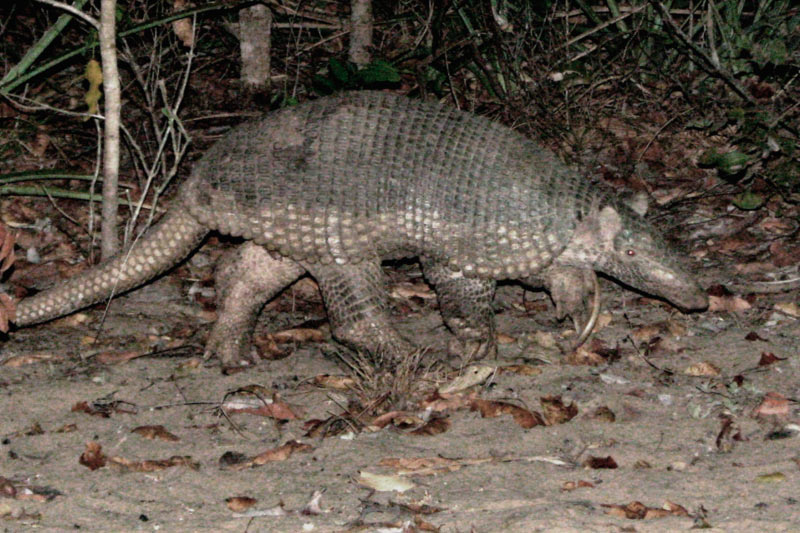One of least known neo-tropical cats, and with few records of this animal in the wild, pampas cats can be found in low population densities. There is therefore little information on the natural history of this species.
Click to learn more
photo: Cassio Corradi
Distribution
The species is found sporadically in South America, from the Andes in Peru to southern Chile in higher regions, and it also inhabits low areas such as the Pantanal. In Brazil, the species is spread throughout the Pantanal, the Cerrado and the Pampas, usually associated with field and undergrowth environments, although it also appears in forested areas.
Features
The pampas cat is a small cat, measuring 50 to 70 centimeters, with a tail measuring between 22 and 32 centimeters. Pampas cats may weigh between three and five kilograms on average. Their coats vary from gray to orange-red, with irregular stripes along the side of the body and paws.
Behavior
Pampas cats are animals of crepuscular and nocturnal habits, preferring to hunt after dusk and at night. They are considered solitary animals and usually hunt on the ground. Little is known about the behavior of this species in the wild.
Food
The diet of pampas cats consists mainly of small mammals, such as rodents, but they will also sometimes prey on slightly larger mammals, like agoutis and pacas, as well as birds, reptiles and amphibians.
Reproduction
The pregnancy of pampas cats varies between 80 and 85 days and they give birth to between one and three cubs, although one is more common. Like other cats, they reproduce all year round without having a defined season.
Conservation
Pampas cats have been classified as “nearly threatened” by the IUCN, but as “vulnerable” according to the national list of the ICMBio. The biggest threat to the species is closely linked to deforestation, the loss and fragmentation of habitats often associated with agriculture (Pantanal and Cerrado), and forestry (Pampas). However, they also suffer from hunting and conflicts with domestic animals such as dogs.


















